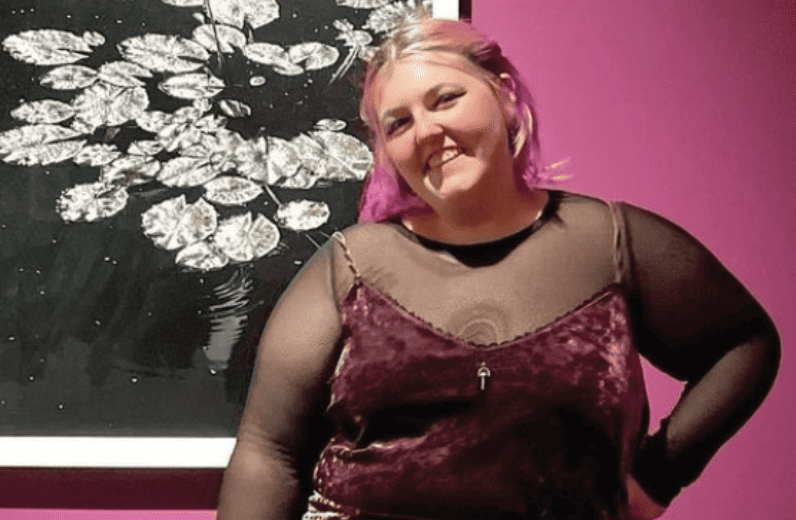Addy Pittenger, Arts & Life Editor—
While Denison is known for having its array of academic majors, it is uncommon for certain subjects to have only one graduate from the current academic term. Catlin Cornish ‘24 is the only Art History & Visual Culture (AHVC) graduate from the class of 2024. But despite the numbers, she has nothing but gratitude towards the department who has been supporting her along her way to graduation.
Cornish entered Denison as an Art History major having always wanted to be one ever since high school. Growing up going to museums with the goal and dream of working in one, Cornish believed that in order to achieve this dream, the opportunities granted at Denison made it the place to be.
“My love for art grew even more since the moment I got here [at Denison],” Cornish exclaims. To her, creating art is a hobby, enjoying mediums like collaging, painting, and drawing. Although these are all hobbies she enjoys, it is the unique human connection that draws in history and communication which interests her the most; hence, the reason to achieve the goal of working in museums.
“We try to communicate so many [different] things, and the special thing about art history is that it is trying to put words to something that might not even have the right words to describe it. Sometimes we can tell so much more from the visual than we can from the limited vocabulary we have,” Cornish adds.
In her academic career at Denison, Cornish describes her experience being both challenging and fulfilling. “I’ve grown a lot here in the classes and courses I’ve taken,” Cornish states, “I’ve found ways in which my passions cross over in perhaps unexpected ways that I never foresaw coming.”
Cornish is also a Women’s & Gender Studies (WGST) major which she did not come in as when originally accepted to Denison. As soon as her academic interests steered towards Women & Gender Studies, Cornish looked for ways for her majors to connect together.
“The lovely thing about being in Women’s & Gender Studies is that it is so diverse. It has so many paths and ways to connect it [to other majors],” Cornish adds, “I like to inject feminism in anywhere I go. [In Art History classes] with Dr. [Julia] Fernandez, we talk a lot about decolonization and power structures which both have similarities with feminism, so really those two passions couldn’t align better in my opinion.”
Currently, Cornish is working on her senior thesis surrounding the topic of Period Dramas representing visuality and countervisuality in the idea of aging. Her interest in period dramas came from her mother at home, as it is a watching hobby they have together, and her opportunity to take a class about period dramas while abroad in the UK only got her more interested in the topic. After coming back from her abroad experience, she knew that this subject was what she wanted to look into for senior research.
For Cornish, at first it was lonely being the only class of 2024 AHVC major, as she only had upperclassmen for guidance, but then she found a community within both the WGST and the AHVC departments who only helped support her research even further. “[AHVC] is a small department,” Cornish shared, “but I have had great conversations with the professors while also getting a lot of support from the WGST department. So I was surprised to be the only [AHVC] major, but not scared.”
When asked what Art History & Visual Culture means to Cornish, she replied, “Visual culture is what we see and experience in our day to day. It gets us to think about power structures and how they really make a difference [in art]. It’s collaborative and communicative, and people can find something with an art history major. At least try an art history class and see what you think for yourself.”

